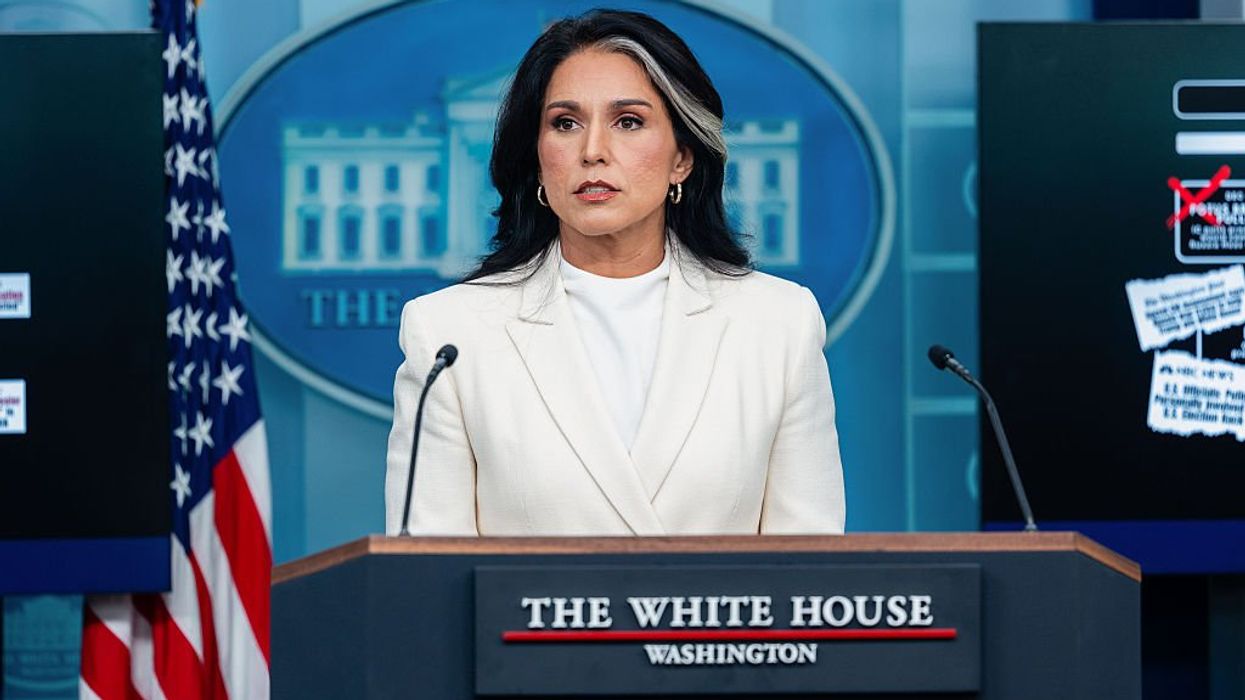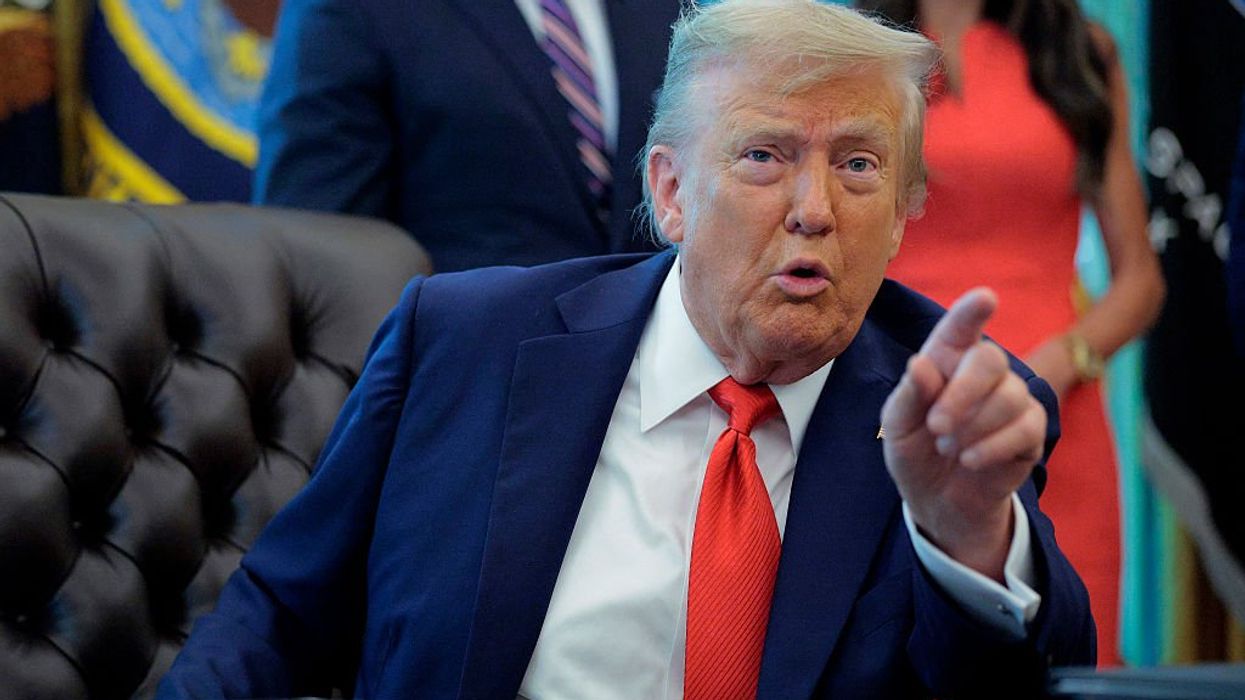While discussing the GOP field on radio Monday, Glenn realized he needs to get the candidates to discuss their war strategy as there may be conflict coming unlike anything people have ever seen. Why?
Below is a rush transcript of this segment
GLENN: Now let's go to the audio -- do you have Rand Paul or -- here's Rand Paul being asked about ISIS and Iraq and Saddam Hussein.
VOICE: You're sort of implying you disagree with that. Do you believe the world would be a better place if Saddam Hussein were still the strong man in Iraq?
RAND PAUL: I don't think that's exactly how I would put it, but I would say I think we are more at risk for attack from people who are training, organizing and fighting in Iraq than we were before, so for example, ISIS is a more of an aberration than even Hussein was, so you have this radical brand of jihad, radical brand of Islam that is now strong and growing stronger because of the failed state that Iraq is. You have the same thing going on in Libya. So this is a valid debate. We'll have to have this debate, not only in the Republican primary, but in the general, as to whether or not it's a good idea. Is intervention always a good idea or sometimes does it lead to unintended consequences?
GLENN: Usually. Usually it leads to unintended consequences.
PAT: Where would you be on that? How would you answer that we? It's difficult.
GLENN: Give me the question.
PAT: Is Iraq better or worse off without Saddam Hussein? I mean, it's worse now, I think, than it was under Saddam Hussein when he was alive, but would it even be worse, if he were still alive? I don't know.
GLENN: There's no way to answer that, but if I had to go back with everything that we know now --
PAT: Would you go in now?
GLENN: No. I would not.
STU: This is the great point of libertarianism and we should consider it more as conservatives and --
GLENN: Are you becoming a conservetarian?
STU: I have read The Conservetarian Manifesto. It's a great book and it goes over those particular arguments well. But as far as this war goes, it is not -- say you believe George Bush was great and you think he did a great job prosecuting the war. When you start these giant government efforts, you can't eliminate the idea that somebody else, like Barak Obama, comes in to screw it up. Let's -- even if you believe, if you are a piper partisan and believe Bush was great, when you start these things, you still have to allow for that, the same way that dumb Progressives say, well, we should just let the president do whatever he wants. Immigration, just let him do it. We say wait until the next guy gets in. You aren't going to like that opinion anymore. Same with war. If you had the perfect guy prosecuting this war, whoever you think that person is, maybe it would have turned out better, but it seems like something always changes that you don't know is coming, then it winds up being worse every time. It is a tough thing to predict. And at the moment -- with the information we had at the time with Iraq, it felt like the right decision. But more and more, as I am growing, as someone who thinks about the world -- I think I am growing, as I grow, you start to consider these things, there's a lot of stuff you don't know.
GLENN: You're becoming Donald Rumsfeld.
STU: There's no knowns and no unknowns. And unknown knowns and unknown unknowns. It is a lot of times this is what happens. Even with the right information, would this be better; we don't know. It is so impossible, because you may have someone else that comes in, a different general, a different piece of information slides in. At the end, you wind up with this, where we kind of, as conservatives agreed it was a good case to go in. And Saddam was dangerous and we don't know. It is possible that Saddam may have done something even worse than what ISIS is doing. We don't know, but it is so impossible to manage, you wonder in the best course of action isn't to just lay back a little bit.
PAT: No. I know that's a bet I have coarse of action.
GLENN: So now tell me what you do with ISIS. Do you lay back a bit?
PAT: No. Well, yeah, because I don't have any confidence in this administration to do it right. George Bush didn't do it right, these guys certainly aren't going to.
STU: Absent of Ted Cruz, and everybody Ted Cruz --
GLENN: I haven't talked to Ted in depth, on what would you war strategy be?
STU: We should do that next time.
GLENN: I don't know where he stands on that.
STU: Even if you think he's the perfect guy, we think he will do it right. Four years later he might not have the job. It is still going on, everybody if you pull all the troops -- there's always going something going on.
PAT: Bush could have taken care of -- come on. In four years, certainly. Eight years, he could have taken care of Iraq, to the point where it was subdued. I mean --
STU: He kind -- he did, kind of. All right sort of didn't. A lot of messing around.
GLENN: The middle part, before the surge, there was a screwup. Then he started the surge, and it got good. I mean -- walked with actual shock and awe, it would have been better.
PAT: Put the hammer down and get out.
STU: Isn't this the communist argument all the time? If Stalin would have just done this. They never do this. The right thing never occurs.
GLENN: I'm kind of with --
PAT: We used to. It's been a long time.
GLENN: Up until Tragedy and Hope.
STU: A lot of that happened before there were these sort of restrictions. Again, we can say we want them to go in and act like World War II, but the -- we have one bomb that flies offer target by six inches and it's like the biggest story in the world forever. People who were naked in a prison was the dominated the news for six months. I mean, how do you --
PAT: But they were in a pyramid.
STU: And a dog was barking nearby. How can you prosecute a war in the a way we'd say would be a winnable way. And when you can't do it that way --
GLENN: I don't think naked pyramids are winning a war.
PAT: No.
STU: I'm not -- when you have a thing --
PAT: Goes nuts, just because you saw men in a naked pyramid and a dog barked near them, you can't prosecute a war like that.
STU: We talk about World War II, where they did shock and awe certainly in World War II. Hundreds of thousands, if not millions of civilians died. It was not at pretty picture. And obviously, war is hell, but is there any way that America, with the backbone they ever today, with the 99 percenters with Occupy Wall Street as part of this country, with all that, they are going to accept a war effort like that? And you'd better freaking be right on that one.
GLENN: Yes.
STU: You are saying if everything changes. Maybe that's true.
GLENN: Except a couple of variable changes. Economic collapse and terrorist attacks here on our own soil, where they go into a school and just kill a bunch of our children, yeah. We'll bomb the snot out of them. We'll bomb the snot out of them, if you had a Republican. If we had President Obama, I think we'd just go on some apology tour, but if we had an economic collapse, where people were frightened, really, truly frightened, and then on top of it, you had a really bad terrorist attack, I think we would.
STU: We had a really bad terrorist attack. 3,000 people died to start this. In Afghanistan, there was still some of that. It wasn't as --
GLENN: You didn't have it -- remember, we were still in good times. We still were -- we are not in fear of losing our country yet. Once you -- most people are not. Most people are not. When you have a real, true fear of losing everything, losing your homeland, and that happens when people are invading -- it is going to be different this next time. It's not going to be 19 guys who got onto a passport and just came over here. Now it will be home-grown. They will be in multiple cities, so you won't know. Did you see what ISIS came out and said? That ISIS, their number one goal now is to hit America and kill the president.
I cannot imagine --
STU: Yeah, that would change perspective.
GLENN: That would change perspectives entirely. Unfortunately, it would change perspectives here in the United States. We got the Patriot Act the last time. Can you even imagine what the Department of Homeland Security would be if they, God forbid, hurt the president?
JEFFY: Yes.
STU: And 90% of the population --
GLENN: Everybody would be screening for it.
STU: Yeah. To go back to what you talked about a mill times, this is why you have to have your principles and know what they are, before that tough moment goes into effect, because you need to be able to rely on them and not make decisions based on emotion.
GLENN: Not enough of us knew the constitution, and we were -- we believed that we would never lose our security. We believed we would never lose our privacy, we would never lose our country. So we were like okay, well, I'm going to trade some of my freedoms, because they're going to give it back. They won't take this. They won't do that. We know now, at least a portion of us, unfortunately, the vast majority still doesn't get it.
I don't know what it's going to take, but you change a few variables and we will -- and I would suggest that you prepare for all-out war, war unlike we have ever seen in our lifetime, because that's what I believe is coming, unfortunately. I'm hoping that there's a way to put this genie back in the bottle, but I don't see it.

 Kean Collection / Staff | Getty Images
Kean Collection / Staff | Getty Images
 Bloomberg / Contributor | Getty Images
Bloomberg / Contributor | Getty Images Chip Somodevilla / Staff | Getty Images
Chip Somodevilla / Staff | Getty Images ROBYN BECK / Contributor | Getty Images
ROBYN BECK / Contributor | Getty Images